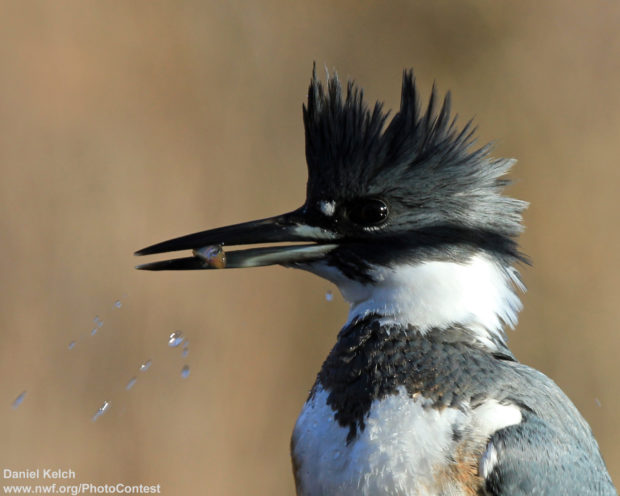We have much more to do and your continued support is needed now more than ever.
Is That Sushi Safe, Kingfisher?
If you love paddling, swimming or just walking along the banks of creeks and rivers like I do, you are probably familiar with the head-turning chatter of the Belted Kingfisher as it flies upstream, making its way between streamside perches. It’s a bird so closely linked to lakes and rivers that it actually nests in dirt burrows that it excavates in banks along the water.

Mercury becomes transformed to methylmercury through microbial action in the environment and can cause death, reduce fertility and affect growth and behavior in wildlife. Methylmercury accumulates in fish, so mercury pollution puts fish-eating (“piscivorous”) species at risk. One study showed that mercury can cause subtle changes to a kingfisher’s plumage, altering how potential mates might see each other.
Mercury pollution is a growing concern for this and other species that depend upon clean waters for their survival.





















